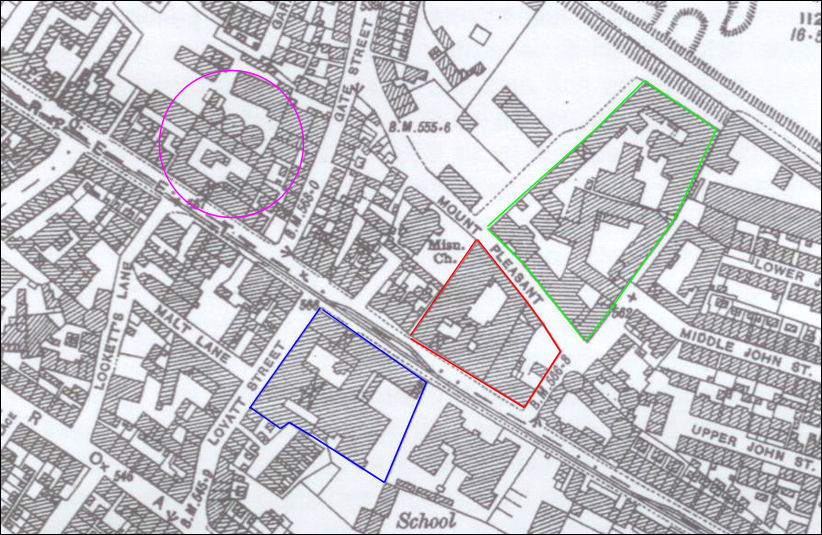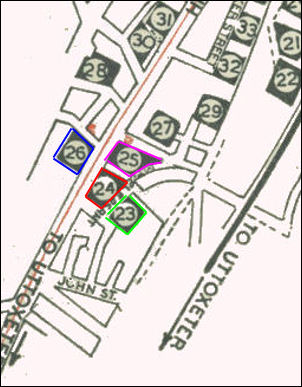![]()
|
|
|
|
|
Stoke-on-Trent - Potworks of the week |
|
St. Mary's Works,
Uttoxeter Road, Longton
|

Thomas C. Wild & Sons -
the St. Mary's Works, Longton
photo: 'Six of the Best' c.1988

St. Mary's Mount Pleasant,
1862
|
"St. Mary's Works was opened a year later than Aynsley's Portland Works. A comparison between them illustrates both the conservatism and the slowly evolving styles of pottery architecture. While St. Mary's appears older at first glance, it shows certain refinements which break with tradition; most obvious are the arched windows, including those of the boardroom, no longer strictly in the Venetian mode. This building has a superb cornice, and a fine weather-vane mounted upon the pediment. The plaque within the gable states simply 'St Mary's Mount Pleasant 1862'. Thomas C. Wild began manufacturing china at Longton's Albert Works in 1893. Within a short time Royal Albert became one of the most important names in the English Bone China industry, gaining the Queen's Award to Industry for Export Achievement in 1968. Mr Wild, a councillor of the old Borough of Longton, became the first Lord Mayor of Stoke-on-Trent in 1928." Richard Weir
|
|
photo: 2005 - at the time of the closure of Stratford Bone China Co. Ltd.
|
The location of the St. Mary Works ....

Normacot end of Uttoxeter
Road (was the High Street) in 1922
- click map for more details -
Blue
= St. Mary Works of Thomas C Wild
Red = Florence Works of Taylor
& Kent
Purple = Blyth works of Tams
Green = Avon Art Pottery, Ltd. /
Elektra Porcelain Co., Ltd

map from 1947
Pottery Gazette & Glass Trade Review
- 26 marks the St. Mary Works
|
23 Avon Art Pottery, Ltd. / Elektra Porcelain Co., Ltd. 24 Taylor & Kent 25 Blyth Pottery (Longton), Ltd. 26 Thos. C. Wild & Sons, Ltd. |
|
related pages... Listed building details for the St. Mary Works Moore
Bros index
page for also see... Longton potteries - the most polluted of all the North Staffordshire pottery towns Longton - Longton was at the end of a lane which ran from Tunstall to a village at the end of the lane, hence Longton was known as Lane End, and colloquially as 'Neck End'.
|